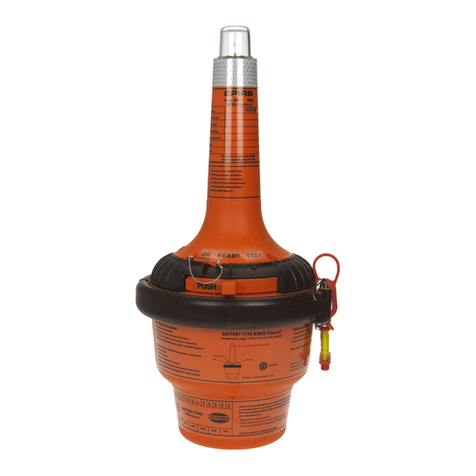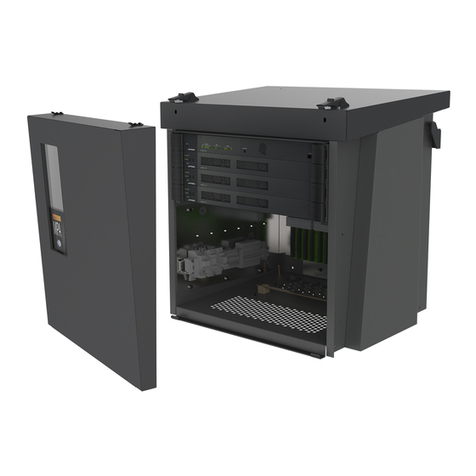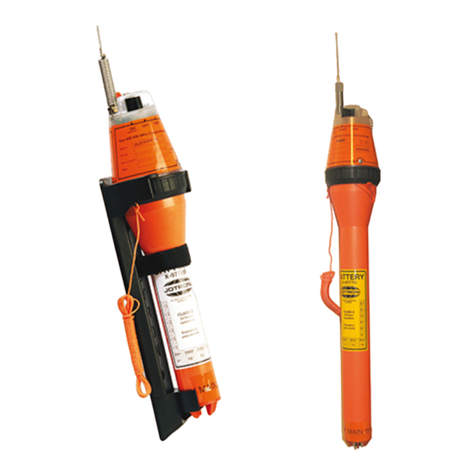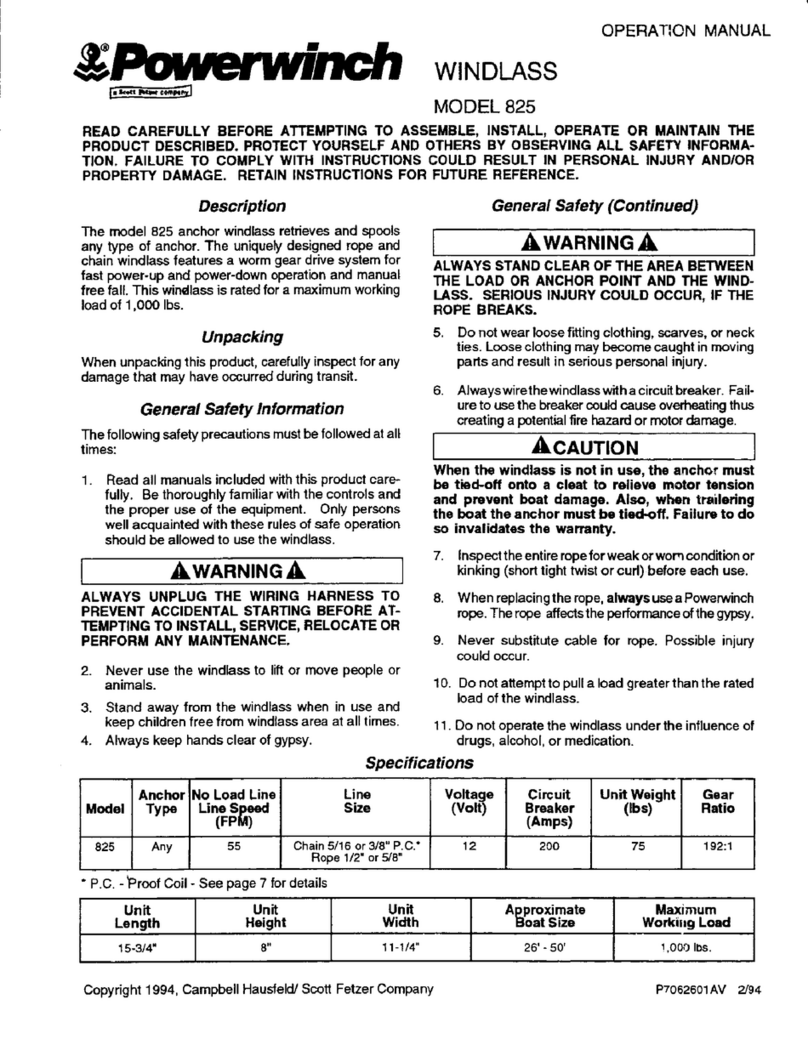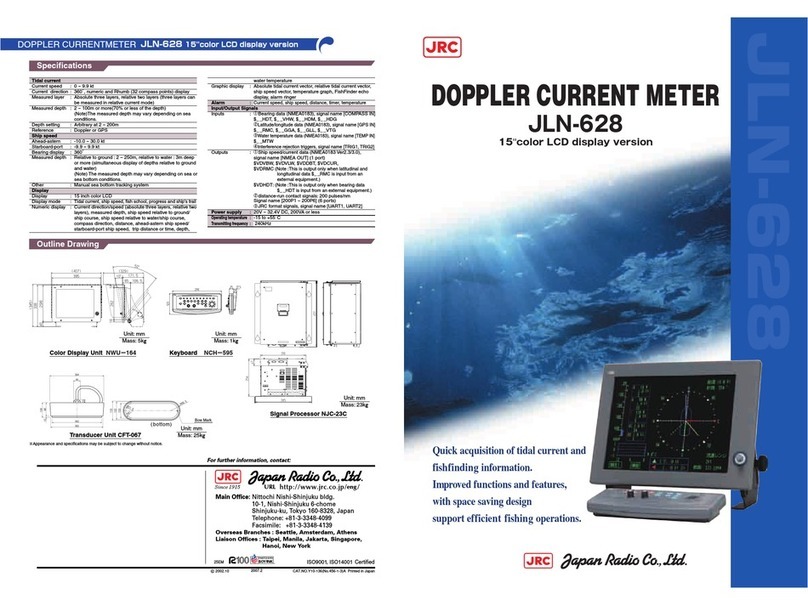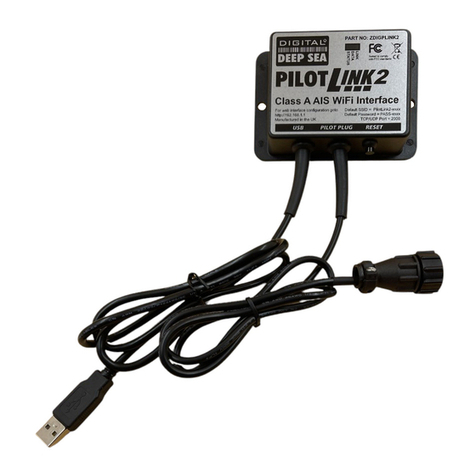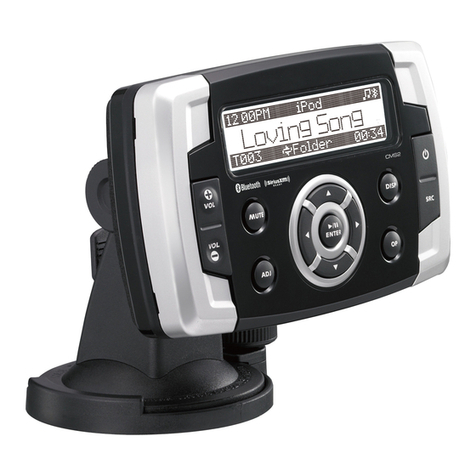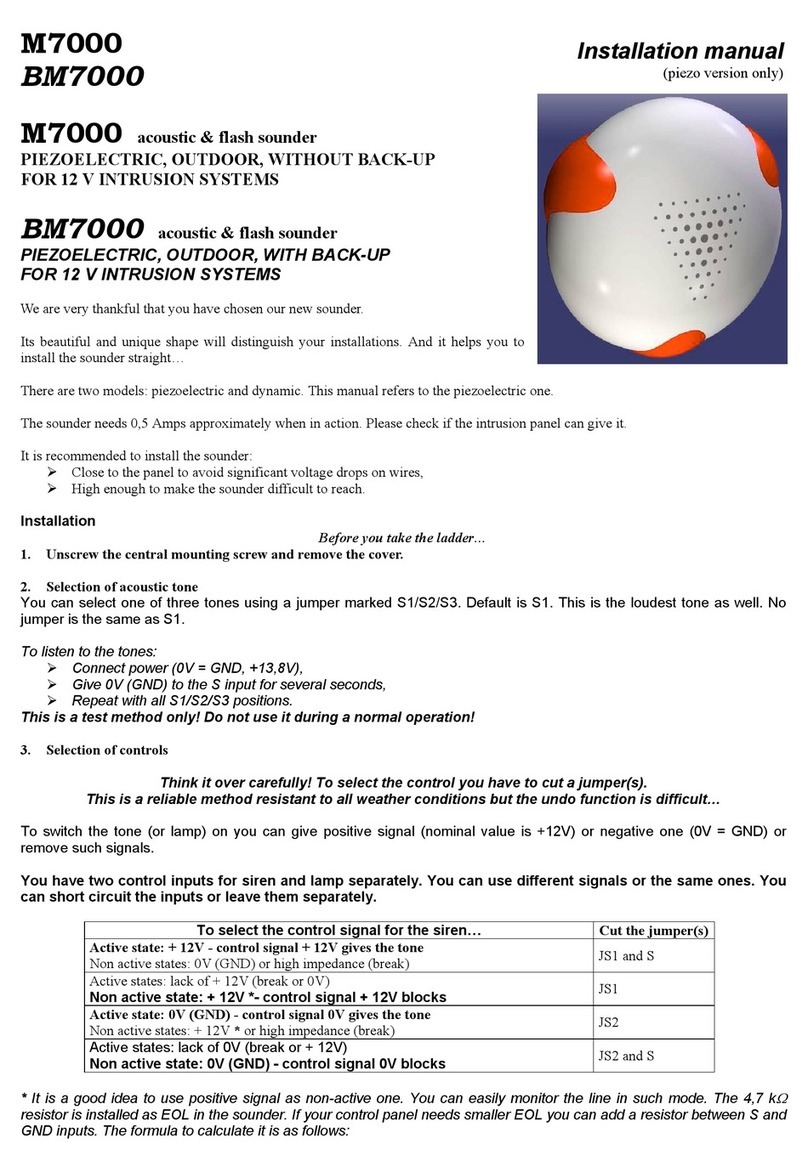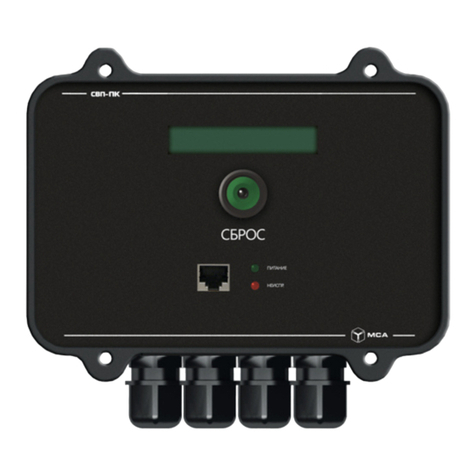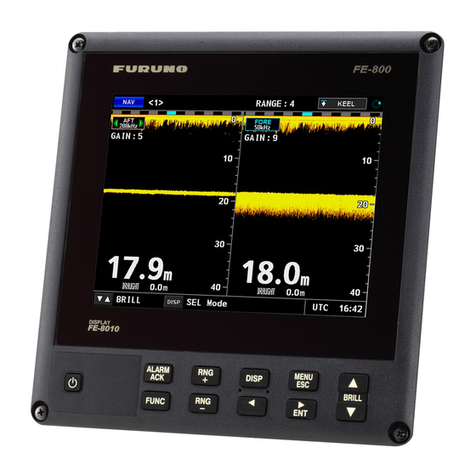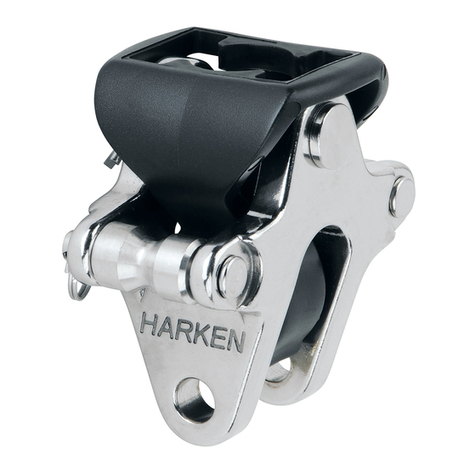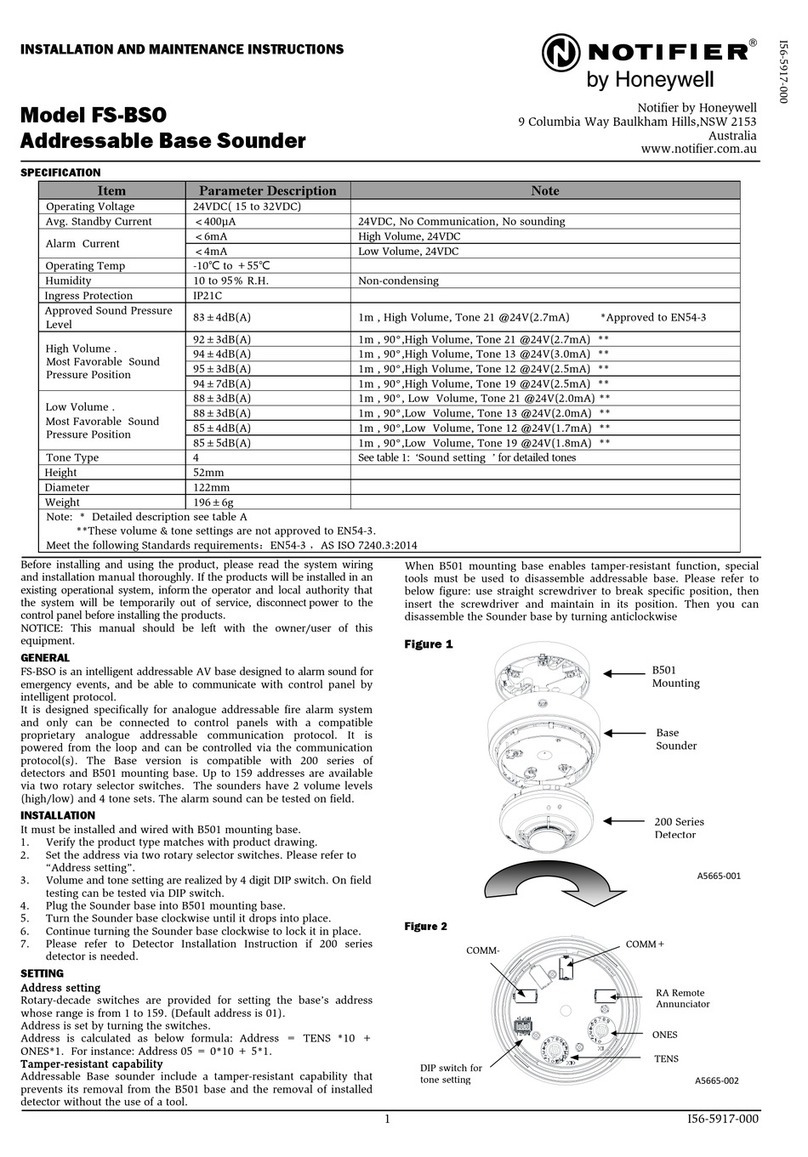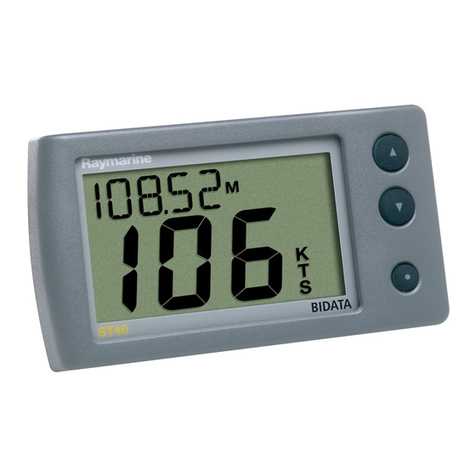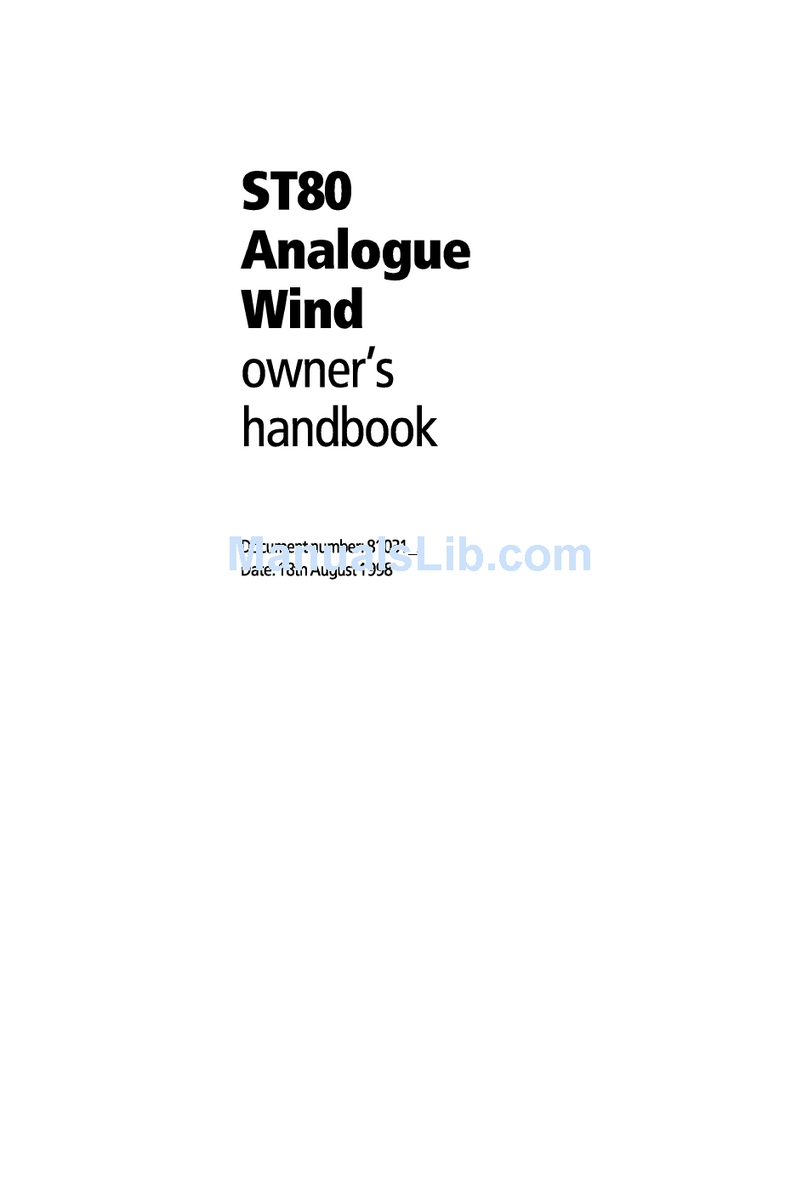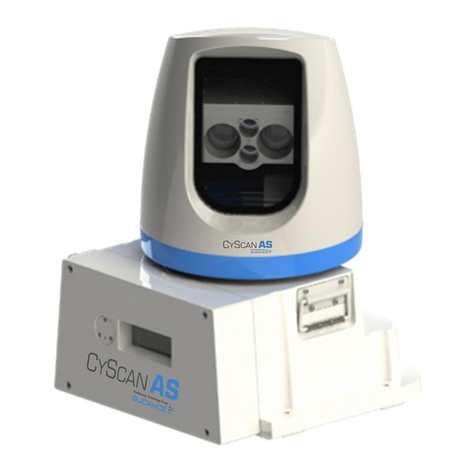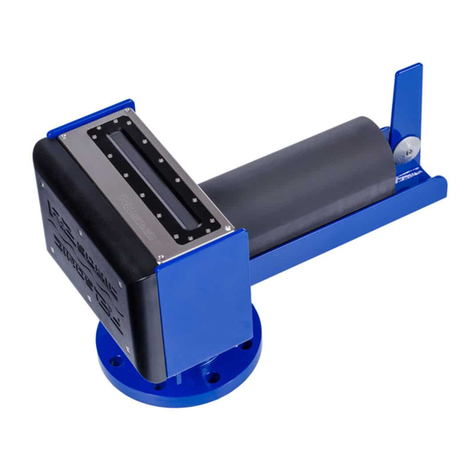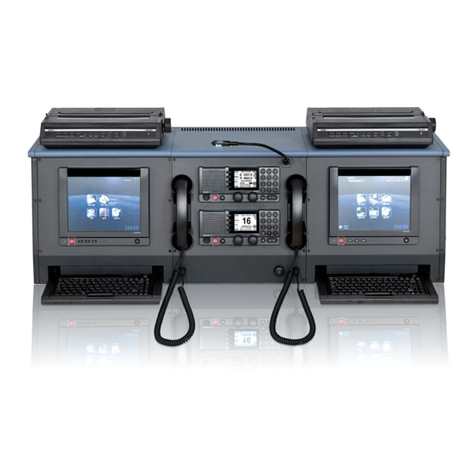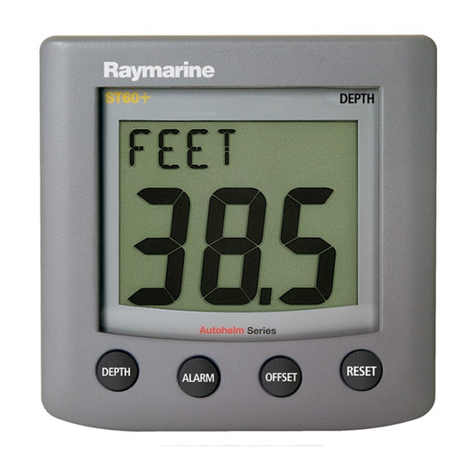jotron TR-2600 User manual

81983_TM_TR2600_I Page 1

81983_TM_TR2600_I 2
EC Declaration of Conformity, available at www.jotron.com
Abbreviations and definitions
ACU
Antenna Changeover Unit
AIS -Automatic Identification System.
A shipborne broadcast transponder system in which ships continually transmit their position, course, speed and other
data to other nearby ships and shoreline authorities on a common VHF radio channel.
ALARM
Message by which the navigator signals the occurrence of an event. The alarm is indicated by an audible tone and/or a
message (or icon) on the display.
ALTITUDE
The height of the antenna over mean sea level.
AMBIENT
Surrounding or encompassing environment.
ANTENNA HEIGHT
The height (over the waterline) in which the antenna is installed.
ASM
AIS Service Management – Controlling entity for the whole AIS service
AUX
Auxiliary Port -A communication port on the AIS transponder, which can be used for NMEA or RTCM, input.
BAUD
Transmission rate unit of measurement for binary coded data (bit per second).
BIT
Short form of Binary Digit. The smallest element of data in a binary-coded value.
bps
Bits Per Second.
BSC
Base Station Controller
CHARACTER STRING
Continuous characters (other than spaces) in a message.
CHECKSUM
The value sent with a binary-coded message to be checked at the receiving end to verify the integrity of the message.
CLICK (KEYBOARD)
The audible tone generated when a key is activated
CLOCK
A precisely-spaced, stable train of pulses generated within an electronic system to synchronize the timing of digital
operations within the system.
CLOCK OFFSET
The differences between the times at the CDU/processor tracking a satellite, the satellite itself, and GPS system time.

81983_TM_TR2600_I 3
COG
See COURSE OVER GROUND
COURSE OVER GROUND
Course made good relative to the sea bed.
CURSOR
A flashing rectangle superimposed on a character position in the display window, indicating that a character may be
entered in that position, or that the existing character may be changed via the keyboard.
DEFAULT
A condition that the navigator assumes automatically if no other condition is initiated by the operator.
DGPS
See DIFFERENTIAL GPS.
DIFFERENTIAL GPS (OOPS)
A method of refining GPS position solution accuracy by modifying
the locally computed position solution with correction signals from an external reference GPS CDU (monitor).
ECDIS
Electronic Chart Display and Information System
EPFS
Electronic Position Fixing System (GPS is mostly used)
ETA
Estimated Time of Arrival. Calculated on basis of the distance to the destination and the current (or estimated) speed.
FATDMA
Fixed Access Time Division Multiple Access -Data link access protocol used by base station transponders to allocate
transmission slots on the data link. These slots are fixed and will thus not change until the base station transponder is re-
configured.
FM
Frequency Modulation -The method by which a signal offsets the frequency in order to modulate it on a data link.
position (latitude, longitude, altitude, and time). See DILUTION OF PRECISION.
GFSK
Gaussian-Filtered-Shift-Keying -A standardised method of modulating digital data prior to transmission on a data link.
GMSK
Gaussian-Minimum-Shift-Keying -GFSK using BT -products and modulation index, which optimises the modulated
signal.
GNSS
Global Navigation Satellite System -A common label for satellite navigation systems (such as GPS and GLONASS).
GLOBAL POSITIONING SYSTEM (GPS)
The NAVSTAR Global Positioning System, which consists of or- biting satellites, a network of ground control stations,
and user positioning and navigation equipment. The system has 24 satellites plus 3 active spare satellites in six orbital
planes about 20,200 kilometres above the earth.
GLONASS
A satellite navigation system developed and operated by Russia.

81983_TM_TR2600_I 4
GMT
Greenwich Mean Time. See also UNIVERSAL TIME COORDINATED.
GPS SYSTEM TIME
Time corrected to Universal Time Coordinated (UTC) and used as the time standard by the user segment of the GPS
system.
HEADING
The direction in which the vessel is pointed, expressed as angular distance from north clockwise through 360 degrees.
HEADING should not be confused with COURSE. The HEADING is constantly changing as the vessel yaws back and
forth across the course due to the effects of sea, wind, and steering error.
IALA
International Association of Marine Aids to Navigation ans Lighthouse Authorities
IEC
International Electro-technical Commission.
IEC 61162-1 Maritime navigation and radiocommunication equipment and systems – Digital interfaces
Single Talker- Multiple listeners: Closely related to NMEA0183 version 2.3, communication at 4800
baud. Definition of both electrical and protocol to be used.
IEC 61162-2 Maritime navigation and radiocommunication equipment and systems – Digital interfaces
Single Talker- Multiple listeners, High speed transmission: Closely related to NMEA0183HS version 2.3,
communication at 34800 baud. Definition of both electrical and protocol to be used.
IEC 61993-2 Maritime navigation and radiocommunication equipment and systems – Automatic Information Systems
(AIS)
Definitions of the sentences used for AIS in addition to those mentioned in IEC 61162-1 and IEC 61162-
2.
IMO
International Maritime Organisation
INTERFACE
Electronic circuits that permit the passage of data between different types of devices; For example, the speed and
heading interface circuit permits data from a speed log and compass to pass to the navigator processor.
IP
Internet Protocol (IP) is the central, unifying protocol in the TCP/IP suite. It provides the basic delivery mechanism for
packets of data sent between all systems on an internet, regardless of whether the systems are in the same room or on
opposite sides of the world. All other protocols in the TCP/IP suite depend on IP to carry out the fundamental function
of moving packets across the internet.
ITDMA
Incremental Time Division Multiple Access -Access protocol for pre-announced transmissions of temporary or non-
repeatable character. It is also used during data link network entry.
ITU
International Telecommunication Union.
LED
Light Emitting Diode.
LSS
Logical AIS Shore Station. A LSS is a software process, which transform the AIS data flow associated with one or
more PSS into different AIS-related data flow. The SW process of a logical AIS station can run on any appropriate
computer at any appropriate place.

81983_TM_TR2600_I 5
MMI
Man Machine Interface
NMEA
National Marine Electronics Association. The NMEA electronics interface specifications have been developed under
the auspices of the Association. The NMEA 0183 is an internationally recognized specification for interfacing marine
electronics. NMEA 0183 version 2.3 is identical to lEC 61162-1.
POLLED MODE
A transponder is in a polled mode during a request-response session only. Distinguish this from a station, which is
polled into certain slots. This station is first polled and then enters assigned mode.
POSITION UPDATE
The redefining of position by analysis of satellite orbital data as referenced to time.
PROCESSOR
The processor circuit card in the console that controls system operations and computes the positioning/navigation
solutions.
PROMPT
A message on the display instructing the operator to make a keyboard entry.
PSS
Physical AIS Shore Station. The PSS is the most basic AIS-related entry, which can exist on its own in a real physical
environment, as opposed to an AIS base station or AIS repeater station.
PULSE SPEED SENSOR
Speed log whose speed output signal is defined by a pulse mte output.
RATDMA
Random Access Time Division Multiple Access -Access protocol for transmissions which have not been pre-
announced. This is used for the first transmission during data link network entry or for messages of non-repeatable
character.
REFERENCE COMPASS
The compass against which the steering compass (see STEERING COMPASS) may be calibrated.
REFERENCE ELLIPSOID
A mathematical description of the Earth's ellipsoidal shape (see ELLIPSOID), which is the reference frame for
positioning computation.
RESET
To return stored values to either the default value or zero in memory.
RMS
See ROOT MEAN SQUARED.
ROOT MEAN SQUARED (RMS)
A statistical measure of probability, stating that an expected event
will happen 68% of the time. In terms of position update accuracy, 68 position updates out of 100 will be accurate to
within specified system accuracy.
SENSOR
A device that detects a change in a physical stimulus and turns it into a signal that can be measured.

81983_TM_TR2600_I 6
SET AND DRIFT
The direction and the speed of the water over ground (current).
SIGNAL- TO-NOISE RATIO (SIN)
Quantitative relationship between the useful and non-useful part of the received satellite signal. A high SIN indicates a
good receiving condition.
S/N See SIGNAL- TO-NOISE RATIO
SOFTWARE
Values programmed and preloaded into memory. The values represent a permanent set of instructions for running the
automatic functions (computations) of the navigator.
SOG
See SPEED OVER GROUND
SOTMA
Self Organised Time Division Multiple Access -An access protocol, which allows autonomous operation on a data link
while automatically resolving transmission conflicts.
SPEED OVER GROUND
Speed in relation to the seabed.
TCP
Transmission Control Protocol (TCP) provides a reliable byte-stream transfer service between two endpoints on an
internet. TCP depends on IP to move packets around the network on its behalf.
TCP/IP
TCP/IP is a name given to the collection (or suite) of networking protocols that have been used to construct the global
Internet. The protocols are also referred to as the DoD (dee-oh-dee) or Arpanet protocol suite because their early
development was funded by the Advanced Research Projects Agency (ARPA) of the US Department of Defense
(DoD).
TDMA
Time Division Multiple Access. An access scheme for multiple access to the same data link.
UDP
User Datagram Protocol provides a packetized data transfer service between endpoints on an internet. UDP depends on
IP to move packets around the network on its behalf.
UNIVERSAL TIME COORDINATED (UTC)
Greenwich mean time corrected for polar motion of the Earth and seasonal variation in the Earth's rotation.
UPDATE
See POSITION UPDATE.
UTC
See UNIVERSAL TIME COORDINATED.
VDL
VHF Data Link.
VHF
Very High Frequency -A set of frequencies in the MHz region.
VSWR
Voltage standing wave ratio

81983_TM_TR2600_I 7
Amendment Record
AMENDMENT
NO. INCORP.
BY DATE PAGE(S) VERSION REASON
FOR CHANGE
1 FIT 02.07.2004 24 (All) A FIT
2 ES 27.10.2004 31 C
3 ES 28.02.2005 38 E
Added design notes, removed
4 ES 08.03.2005 38 F Removed SW & HW versions
5 ES 06.11.2006 37 G Kontroll med manualer.doc
6 ES 11.04.2007 Total: 38 H New company name
New logo
7 ES 04.01.2008 5-12 I Talker identifier
8
9
10
11
12
13
14
15
16
17
18
19
20

81983_TM_TR2600_I 8
The information in this book has been carefully checked and is believed to be accurate. However,
no responsibility is assumed for inaccuracies.
Jotron AS reserves the right to make changes without further notice
to any products or modules described herein to improve reliability, function or design.
Jotron AS does not assume any liability arising
out of the application or use of the described product.
SAFETY INSTRUCTIONS
1. Do not place liquid-filled containers on top of the equipment.
2. Immediately turn off the power if water or other liquid leaks into the equipment.
Continued use of the equipment can cause fire or electrical shock. Contact a Jotron AS
agent for service.
3. Immediately turn off the power if the equipment is emitting smoke or fire.
4. Do not operate the equipment with wet hands.
5. CAUTION!
This equipment contains CMOS integrated circuits. Observe handling precautions to
avoid static discharges which may damage these devices.

81983_TM_TR2600_I 9
LIST OF CONTENTS
1 DESIGN NOTES...................................................................................................................................... 1-1
1.1 Scope.....................................................................................................................................1-1
1.2 Function .................................................................................................................................1-1
1.2.1 General.........................................................................................................................................1-1
1.2.2 Own Position................................................................................................................................1-1
1.2.3 Message 4 scheduling...................................................................................................................1-1
1.2.4 Message 16 - Assigned Mode ......................................................................................................1-2
1.2.5 Message 17 - Differential GPS data.............................................................................................1-2
1.2.6 Message 20 - FATDMA allocation..............................................................................................1-2
1.2.7 Message 22 - Channel Management ............................................................................................1-2
1.2.8 Sending VDL messages using FATDMA/RATDMA..................................................................1-2
1.2.9 System restart...............................................................................................................................1-3
1.3 Interfaces.................................................................................................................................1-4
1.3.1 Physical Interfaces .......................................................................................................................1-4
1.3.2 Sensor ports..................................................................................................................................1-4
1.3.3 DGNSS port.................................................................................................................................1-5
1.3.4 VDL ITU-R M.1371-1.................................................................................................................1-5
1.4 Alarms and notifications............................................................................................................1-6
1.5 Administration .........................................................................................................................1-7
1.5.1 User / groups................................................................................................................................1-7
1.5.2 File System Download.................................................................................................................1-7
1.5.3 SW download...............................................................................................................................1-7
1.5.4 FTP...............................................................................................................................................1-7
1.5.5 Telnet ...........................................................................................................................................1-7
2 SPECIFICATIONS.................................................................................................................................. 2-1
2.1 General....................................................................................................................................2-1
2.2 Transponder:............................................................................................................................2-1
2.3 Display/ Keyboard....................................................................................................................2-1
2.4 Integrated GPS.........................................................................................................................2-1
3 INTERFACES.......................................................................................................................................... 3-1
3.1 Interfaces with table of sentences...............................................................................................3-1
3.2 Transmission Intervals ..............................................................................................................3-1
3.3 Load requirements as listener.....................................................................................................3-1
4 DATA TRANSMISSION......................................................................................................................... 4-1
4.1 Data transmission .....................................................................................................................4-1
4.2 Serial interface description ........................................................................................................4-1
4.2.1 AIS port 1, 4,5 , I/O description...................................................................................................4-1
4.2.2 AIS port 7 , Input port description ...............................................................................................4-2
5 DESCRIPTION OF SENTENCE FORMAT........................................................................................ 5-1
5.1 Input........................................................................................................................................5-2
5.1.1 ABM - Addressed Binary and safety related Message.................................................................5-2
5.1.2 ACA - AIS Regional Channel Assignment Message...................................................................5-3
5.1.3 ACK - Acknowledge alarm..........................................................................................................5-3
5.1.4 ACM - Addressed Channel Management.....................................................................................5-4
5.1.5 AIR - AIS Interrogation Request.................................................................................................5-4
5.1.6 ASN - Assignment VDL Message 16 ..........................................................................................5-5
5.1.7 BBM - Broadcast Binary Message...............................................................................................5-6
5.1.8 BCF - Base Station Configuration................................................................................................5-6
5.1.9 CAB - Control AIS Base Station..................................................................................................5-7
5.1.10 CBM Configure Base Station Message Reporting Rates.........................................................5-7
5.1.11 DLM Data Link Management slot allocations for base station and mobiles...........................5-8
5.1.12 DTM Datum reference.............................................................................................................5-8
5.1.13 GBS - GNSS satellite fault detection .......................................................................................5-9
5.1.14 GGA - Global positioning system (GPS) fix data....................................................................5-9
5.1.15 GLL - Geographic position - latitude/longitude.....................................................................5-10

81983_TM_TR2600_I 10
5.1.16 GNS - GNSS fix data.............................................................................................................5-10
5.1.17 RMC Recommended minimum specific GNSS data .............................................................5-11
5.1.18 VDM - VHF Data-link Message............................................................................................5-11
5.2 Output ...................................................................................................................................5-12
5.2.1 ABK - Addressed and binary broadcast acknowledgement.......................................................5-12
5.2.2 ALR - Set alarm state.................................................................................................................5-12
5.2.3 TXT - Text transmission............................................................................................................5-13
5.2.4 VDM ..........................................................................................................................................5-13
5.2.5 VDO - VHF Data-link Own-vessel message..............................................................................5-13
5.3 Proprietary sentences ..............................................................................................................5-14
5.3.1 Proprietary sentence overview ...................................................................................................5-14
5.3.2 PJTR,00 - Error message............................................................................................................5-14
5.3.3 PJTR,30 - Request info ..............................................................................................................5-14
5.3.4 PJTR,34 - Answer LAN request.................................................................................................5-15
5.3.5 PJTR,40 - Request Version........................................................................................................5-15
5.3.6 PJTR,41 - Answer on requested version....................................................................................5-15
5.3.7 PJTR,210 - Request system configuration parameters...............................................................5-16
5.3.8 PJTR,211 - LAN connection modus ..........................................................................................5-16
5.3.9 PJTR,212 - How to send msg4 after restart................................................................................5-16

81983_TM_TR2600_I Page 1-1
1 DESIGN NOTES
The Tron AIS TR-2600, an AIS Base Station, is the most basic AIS-related entity of any AIS Shore
Infrastructure. The AIS Base Station is defined by IMO. It cannot operate on its own, because it
needs commands from an external unit, i.e. a Base Station Controller (BSC), which may be
connected to a Management System.
1.1 Scope
This chapter describes how functionality is implemented in the AIS BS unit – where the
specification does not clearly describes all details. This description is usable for developers of Base
Station Controller (BSC) functionality.
1.2 Function
1.2.1 General
The AIS BS is implemented to AIS “Coast Station” CD 05.2002 as a guide.
1.2.2 Own Position
In the VDL msg. 4 – Base Station Report, the position of the AIS BS is specified.
We define which position source to use in the BCF message. The options are
• External. The AIS Base station will use the same rules as the Class A transponder to monitor
and select position source. If no External GPS is available, the internal is used. The same
TXT and ALR are used as for the Class A. If no position data is available from internal or
external GPS, “no position” is used and an alarm is initiated.
• Internal. Only internal position source is monitored. If no position data is available from
internal GPS, “no position” is used and an alarm is initiated.
• Surveyed. The surveyed position must be specified in the BCF message as well. Other GPS
sources are not monitored if surveyed position is used. The surveyed position is stored, so
the data is available after a restart.
1.2.3 Message 4 scheduling
The unit will start sending message 4 when the CBM message is received from the presentation
interface. The CBM message defines the start slot, but the rate is internally determined by the AIS
BS according to semaphore / not semaphore status.
• Each time a CBM message is received the startslot will be stored, and the other slots will be
allocated immediately.
• If the CBM message dictates –1. All message 4 allocations are removed immediately.

81983_TM_TR2600_I 1-2
• Each time a new rate is determined, the last start slot is used to allocate the other slots in the
frame. Old reserved slots are marked free.
• Each time a CAB message is received enabling or disabling one of the channels, the current
start slot will be used to calculate the other slots according to schedule.
1.2.4 Message 16 - Assigned Mode
The ASN message is used to send an Assigned Message 16 on VDL. The assignments within this
message can either be soft assigned or hard assigned.
Soft Assignment.
A rate is given in the transmitted message. The specified class A transponder will send VDL
message 2 in free slots.
Hard Assignments
A fixed slot number and an increment is given for where the class A transponder shall send the
VDL message 2. These dedicated slots might be reserved by FATDMA.
Warning: In our current versions, hard assigned slots are not marked in the system. There is a risk
that the hard assigned slots can be used for other FATDMA messages.
1.2.5 Message 17 - Differential GPS data
Own generation of Msg 17 data is not supported. This service must be performed by a higher level
and transmitted by a VDL message via VDM.
1.2.6 Message 20 - FATDMA allocation
The DLM defines when to reserve slots used for FATDMA. Maximum 10 reservations can be
stored for each channel. The slots are reserved internally when the DLM message is received.
Other units gets this information when msg. 20 is distributed. The schedule of msg. 20 is defined in
the CBM msg. The reservations will be transmitted sequentially by order per channel.
1.2.7 Message 22 - Channel Management
Storage of the regional areas follows the same rules as for the Class A transponder. The AIS Base
station can store as much as 8 areas.
When the CBM message defines where to send msg. 22, the defined areas are distributed
sequentially by order. There are no definition on how to clear the defined areas by command, except
overwrite the existing are by a large one. The AIS BS will clear all areas during restart.
It is not possible to decide on which channel the different region definitions shall be transmitted.
1.2.8 Sending VDL messages using FATDMA/RATDMA
All received VDM messages are unwrapped and put in a message queue. Repeating of msg.4, 10,
11 and 20 are not legal, so these messages are silently removed.

81983_TM_TR2600_I 1-3
The messages are then put into the queue by its priority. The queue is common for messages on
both channel A and B.
Algorithm for selecting FATDMA/RATDMA slot: When a message is to be sent, the next 150 slots
are analysed to see if there is any reserved FATDMA slots for the message. If so, the first suitable
reservation is used (The message need more than one slot). If no FATDMA reservation is found, the
message is sent by RATDMA. Then standard slot reuse algorithms are used as for the Class A
transponder if high load. If no channel assignment is specified in the VDM message, the message is
sent on the first available FATDMA slot on either channel.
If not enough FATDMA slots are reserved, the queue might become full. The Jotron BS has a
queue of 20 messages. When the queue becomes full, an MSGQ ALR is set until the queue has
emptied to below a specified threshold.
It is up to the Base Station Controller to clear the communication state for any repeated messages,
to avoid miss-configurations in the slot tables of the listening class A transponders.
If channel is not specified in the received VDM message, the first available FATDMA reservation
in either channel is used for the message.
1.2.9 System restart
1.2.9.1 Storage of data
The AIS BS stores these configuration data during a system restart:
• Own MMSI
• Position source
• Surveyed Position and Position Accuracy
• Rx and Tx channels and power level
• VDL message retries
• Message Repeat Indicator
• Base Station Talker ID
• In addition these configurations are stored:
• Configuration of start of message 4
• Configuration of LAN connection type for PI
• Listening port for UDP/TCP connection
• BSC IP address and destination port for UDP connection
1.2.9.2 Configurable start of msg 4
In the Jotron AIS BS there are three options at a system re-start for how to handle msg.4. Normally
the msg. 4 is defined in the CBM message, with a start slot.
After a restart we have three options:
• The msg 4 transmission must be restarted by a CBM message
• The last given CBM definition of msg 4 is stored. Msg 4 transmission is restarted according
to this.
• Msg. 4 is always transmitted after restart. The AIS BS selects a random start slot.

81983_TM_TR2600_I 1-4
1.2.9.3 Configurable LAN interface
The Jotron AIS BS provides PI over either TCP or UDP connection to unit.
UDP, destination can either be another unicast or a multicast address. Configuration by MMI:
• Own IP Address and AIS Receiver listen port
• BSC IP Address and port
TCP server, one client can be connected. Configuration by MMI:
• Own IP Address and AIS Receiver listen port
One serial message is always sent in one TCP/UDP packet. The AIS BS can handle reception of
several serial messages in one TCP/UDP packet.
1.3 Interfaces
1.3.1 Physical Interfaces
VDL 1371-1
RS-232
RS-422
TCP or UDP
The types of physical interfaces are provided for the Presentation Interface. Two serial port and one
Lan port:
• RS-422 Ecdis port
• RS-232 Pilot port
• Lan Tcp or Udp
The AIS BS provides general Lan services, such as telnet and ftp. Own set of MAC addresses are
reserved (00 06 CB 02 xx xx) where xx xx is the serial number of the unit.
1.3.2 Sensor ports
Input
Used when External Position is selected.
For supported messages, see Tron UAIS TR-2500.
Output
Not Applicable.

81983_TM_TR2600_I 1-5
1.3.3 DGNSS port
Input
For supported messages, see Tron UAIS TR-2500.
Output
Not Applicable.
1.3.4 VDL ITU-R M.1371-1
Input
According to specification.
Output
BS generated messages:
Msg
ID Description
4 Base Station static report
6 Binary Addressed Message
7 Binary Addressed Ack
8 Binary Broadcast Message
10 UTC/Date request
12 Safety Addressed Message
13 Safety Addressed Ack
14 Safety Broadcast Message
15 Interrogation
16 Assigned mode command
17 DGNSS broadcast
20 Data Link Management
21 Aids-to-navigation report
22 Channel Management

81983_TM_TR2600_I 1-6
1.4 Alarms and notifications
alarms description text
Alarm condition
threshold exceeded
Alarm condition not
exceeded
alarm ID or text identifier
reaction of the system to the
alarm condition threshold
exceeded
AIS: Tx malfunction A V 001 Stop transmission
AIS: Antenna VSWR exceeds limit A V 002 Continue operation
AIS: Rx channel 1 malfunction A V 003 Stop transmission on affected
channel
AIS: Rx channel 2 malfunction A V 004 Stop transmission on affected
channel
AIS: general failure A V 006 Stop transmission
AIS: no sensor position in use A V 026 Continue operation
AIS: Frame synchronisation failure A V 037 Stop transmission
AIS: FATDM/RATDMA queue
congestion A v 050 Allocate FATDMA slots
Text message
Text identifier
reaction of the system
AIS: UTC clock lost 007 Continue operation using indirect or semaphore
synchronisation
AIS: external DGNSS in use 021 Continue operation
AIS: external GNSS in use 022 Continue operation
AIS: internal DGNSS in use (beacon) 023 Continue operation
AIS: internal DGNSS in use (msg 17) 024 Continue operation
AIS: internal GNSS in use 025 Continue operation
AIS: surveyed position in use 041 Continue operation
AIS: UTC clock OK 042 Continue operation
AIS: System Started 051 Continue operation

81983_TM_TR2600_I 1-7
1.5 Administration
The operation system used for the AIS BS is embedded Linux. A small Linux system is configured
specially for our unit. A subset of Linux commands are available.
1.5.1 User / groups
We have defined three users in our system; root, lab and guest. These are initial users, with initial
passwords. If more users are needed, standard Linux commands are available for add and delete of
new users, in addition to change password.
The files where all information about users, groups and passwords are stored, are mirrored to the
directory /flashdisk/etc every time information is updated. This, for keeping the changed
information after reboot. During the boot process these files, which are stored under /flashdisk/etc
are copied back to the /etc directory.
1.5.2 File System Download
Must be performed via terminal cable, Xmodem 1K.
1.5.3 SW download
A upgrade.tar.gz package is stored in directory /flashdisk/ftp. Reboot system and the system will
automatically upgrade.
1.5.4 FTP
A ftp server is provided by the AIS BS. In the initial system you can log in as lab or guest.
1.5.5 Telnet
A telnet server is provided by the system. In the initial system you can log in as lab or guest.

81983_TM_TR2600_I Page 2-1
2 SPECIFICATIONS
2.1 General
Supply voltage: 24 VDC +30% / -10%
Power consumption: <100W
Operating temperature: -15°C to +55°C
Environmental: IP64
2.2 Transponder:
Size: 244 x 108 x 146 mm
Weight: 2.8 kg
Color: Slate Grey (RAL7015)/ Black (RAL 9004)
Enclosure: Polycarbonate/ Aluminium
Compass safety distance:
Standard magnetic: 0.9 m
Steering magnetic: 0.65 m
2.3 Display/ Keyboard
Display: Monochrome STN-LCD, 24 characters x 4 lines
Keyboard: 19 keys
LED: 4 LED for identification of: Alarm/ OK/ RX /TX
Keyboard and display have backlight that may be adjusted.
2.4 Integrated GPS
No of Channels: 12 channels parallel
Tracking: 12 channels simultaneously
Frequency: L1 - 1575.42 MHz
RX code: C/A code
Velocity: > 500 m/s
Acceleration: Up to 5G
Accuracy:
Horizontal: < 3 meters (CEP)
5 meters 2dRMS
3D: < 5 meters (SEP)
DGPS: < 1 meter (CEP)
Timing: < 100 ns (absolute)
< 40 ns (1sigma)
Acquisition/ Reacquisition: < 23 seconds TTFF (Time to first Fix) with time, position,
ephemeris
< 45 seconds with almanac, time, position
< 120 seconds (Cold start)
DGPS interface: RTCM SC-10

81983_TM_TR2600_I Page 3-1
3 INTERFACES
3.1 Interfaces with table of sentences
Input sentences Output sentences
Sensor 1:
(External GPS)
DTM, GBS, GGA, GLL,
GNS, OSD, RMC,
External Display,
Aux Display/ Pilot
Port, LAN
ABM, ACA, ACK, ACM,
AIR, ASN, BCF, BBM,
CAB, CBM, DLM, DTM,
GBS, GGA, GNS, GLL,
RMC, VDM
ABK, ACA, ALR,
TXT, VDM, VDO
All the above ports comply with IEC 61162-1 (Second edition, 2000-07) at 4800 baud
and IEC 61162-2 (First edition, 1998-09) at 38400 baud
Alarm Output: Contact closure
Lan: 10BaseT
In addition to the above listed sentences, some proprietary sentences are described in paragraph 5.3
3.2 Transmission Intervals
ABK, ALR, TXT: At each event
ALR: 30 seconds during alarm,
1 minute otherwise (empty message)
ACA,VDM: At RX
VDO At every transmitted message on the VDL
3.3 Load requirements as listener
Isolation: Provided
Maximum voltage: +/- 14 V to Isolated Ground
Maximum diff. Voltage
(A-B): +/- 15 V
Threshold: +/- 0.2 V (A-B)
Input impedance: 232 ohm w/jumper (Termination
Strap) 7680 ohm wo/ jumper

81983_TM_TR2600_I Page 4-1
4 DATA TRANSMISSION
4.1 Data transmission
Data is transmitted in serial asynchronous form in accordance with the standards referenced in
2.1 of IEC 61162-1/2. The first bit is a start bit and is followed by data bits, least-significant-
bit first, as illustrated by figure below.
The following parameters are used:
- baud rate: 4 800 / 38 400 1
- data bits: 8 (D7 = 0),
- parity: none;
- stop bits: 1.
D0 D1 D2 D3 D4 D5 D6 D7
Start Stop
bit Data bits bit
Note: Baudrate is 4800 on IEC 61162-1 interfac and 38400 on IEC 61162-2 interface
4.2 Serial interface description
4.2.1 AIS port 1, 4,5 , I/O description
Port 1 are input only, Port 4-5 are both input/output
All ports have selectable baudrate, 4800/38400.
Simplified diagram of Linear Tech. LTC1535
B
In
p
ut
2
A
B
Output
3
Note 1: The cabling shall be designed in a way that stubs are avoided and kept as short as possible.
Inside TR-2600 External cables
A
Other manuals for TR-2600
1
Table of contents
Other jotron Marine Equipment manuals
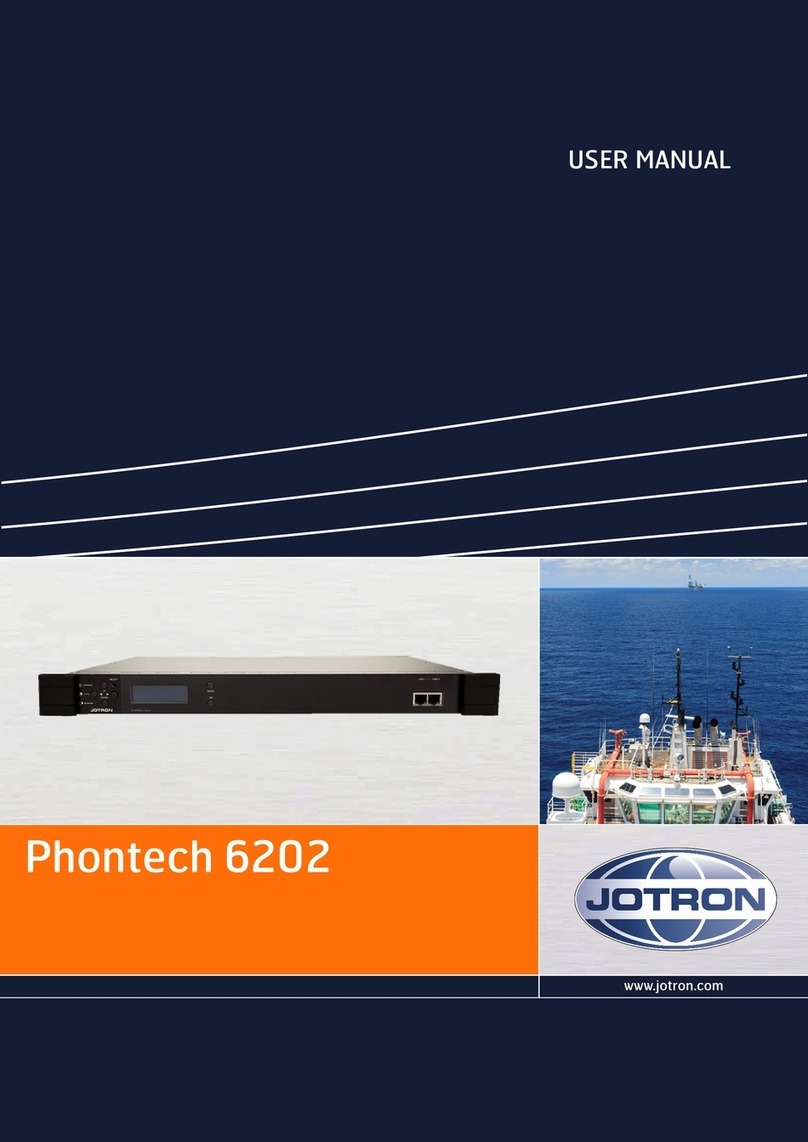
jotron
jotron Phontech 6202 User manual
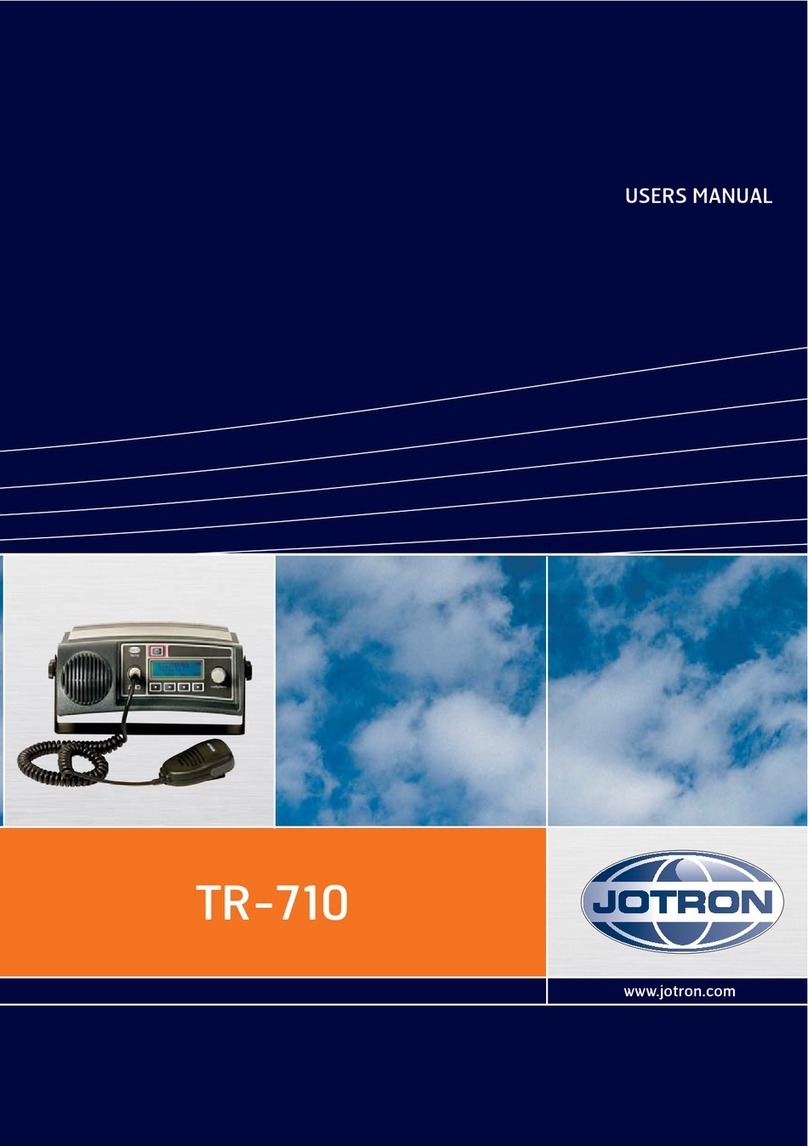
jotron
jotron TR-710 User manual
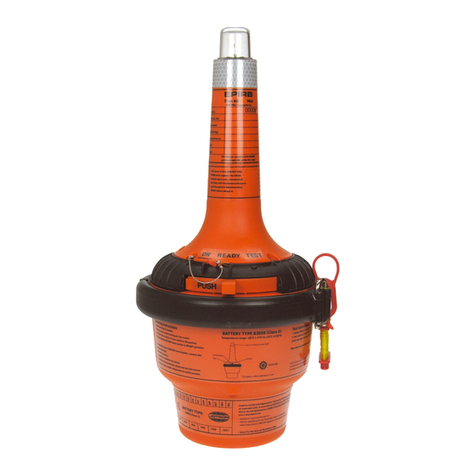
jotron
jotron Tron 40S MkII EPIRB User manual
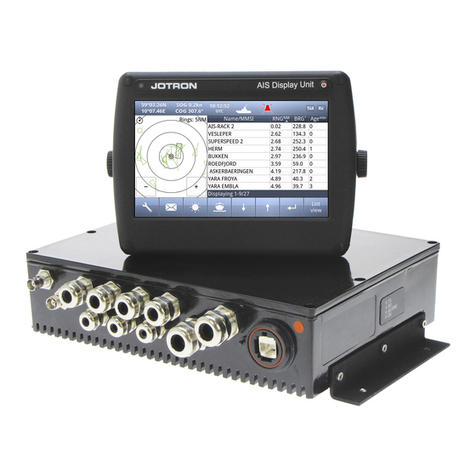
jotron
jotron Tron AIS TR-8000 User manual
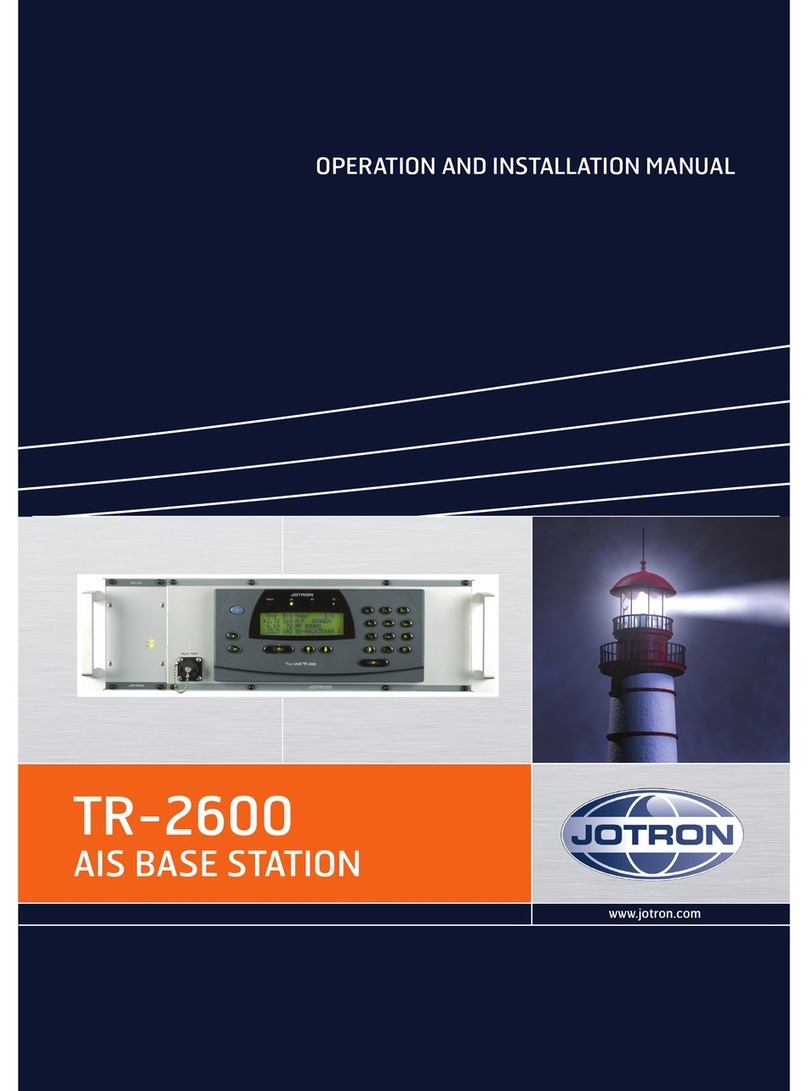
jotron
jotron TR-2600 Specification sheet
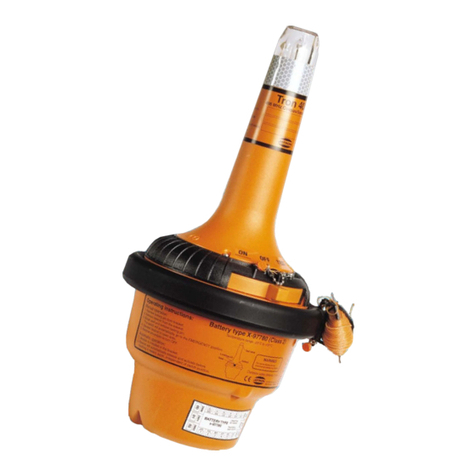
jotron
jotron Tron 40S MkII User manual
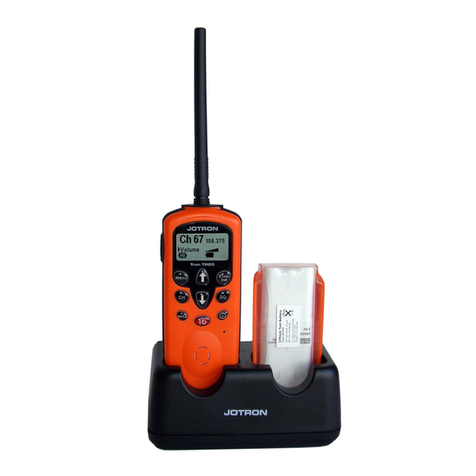
jotron
jotron Tron TR20 GMDSS User manual
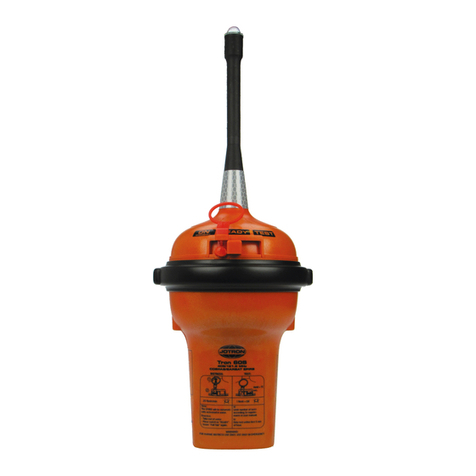
jotron
jotron Tron 60S User manual
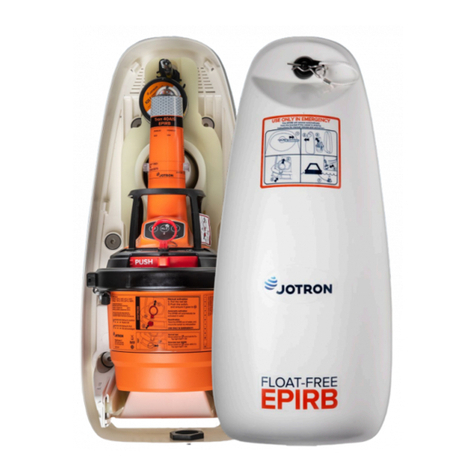
jotron
jotron Tron 40AIS User manual
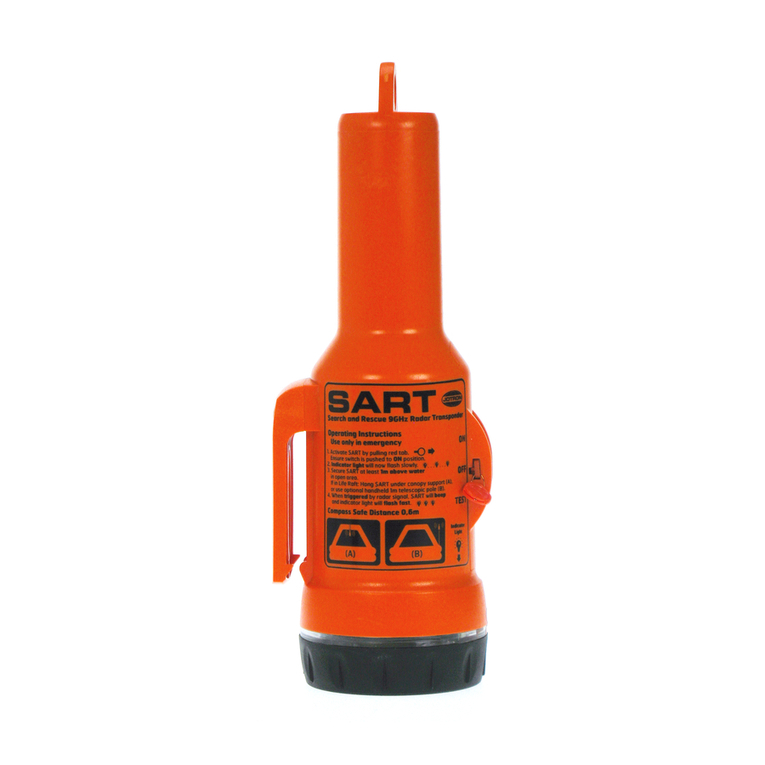
jotron
jotron Tron SART20 User manual
